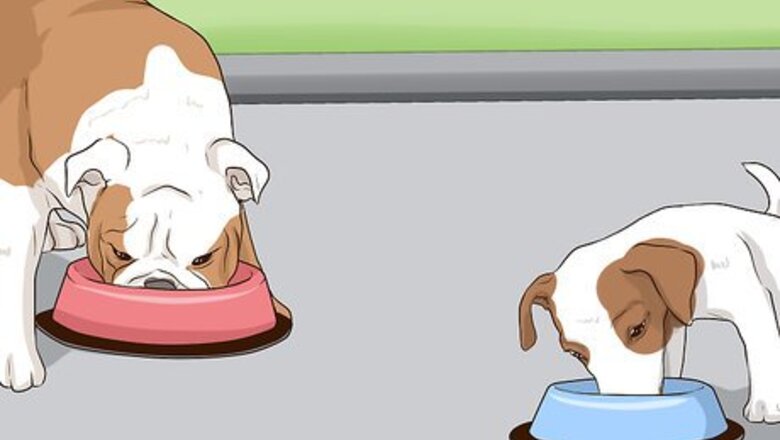
views
Promoting Balance at Home
Do not reward aggressive behavior. Many people mischaracterize aggressive behavior as normal disputes over “alpha” status, and they mistakenly try to reinforce the apparent hierarchy among their pets. In fact, dominance hierarchies are usually not obvious to humans and may vary depending on the situation. When dogs disagree with each other, they typically settle the dispute using body language and vocalizations with minimal contact. In most cases, a dog that physically attacks the other dog is behaving inappropriately. Rewarding aggressive behavior in these “alpha” dogs only serves to make them more confident in their aggression, and can escalate the situation.
Prevent situations that promote aggression. Consider situations that seem to cause your dogs to fight. For example, if the disputes seem to be related to resources, like high-value treats or favorite toys, gather up these items and keep them in a safe place until you can provide supervised play. Similarly, if your dogs seem to fight only when there is excitement, such as when guests come over, you should anticipate this and put them in separate rooms or crates before your company arrives.
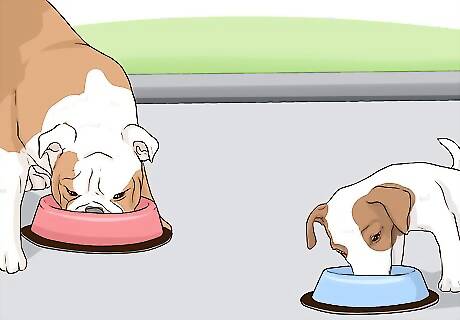
Feed dogs separately. Provide each dog with its own separate bowl, with plenty of space between them. If your dogs show signs of aggression while eating, you may even consider feeding them in different rooms. When feeding time is over, remove any uneaten food to prevent dogs from eating each others’ leftovers. If you provide a treat or bone, provide one for each dog. One water bowl for all dogs is usually fine, however, if one dog seems to be protective of the water bowl, provide separate bowls for the dogs.

Provide separate sleeping areas. Just like food bowls, each dog needs a separate area (such as a dog bed or crate) to sleep. In multi-dog households, dogs will usually select where they sleep. They may switch beds at times or even sleep together. The important thing is to ensure that each dog has enough space when it needs it. You might consider crate training your dogs. If you do this, be sure to provide a comfortable crate for each of your dogs.
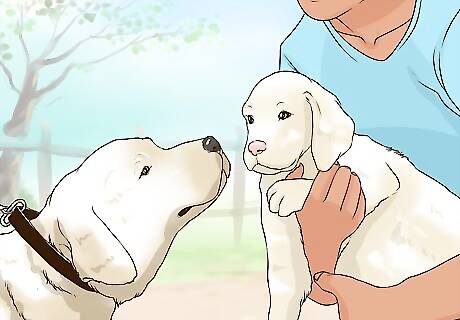
Introduce new animals slowly. Anytime you bring a new animal home, everyone in your household needs a little time to adjust. If you introduce a new dog or puppy slowly and carefully, the dogs are less likely to fight, and are more likely to quickly determine their social standing with one another. Allow them to meet on neutral territory, such as a park. Ask a friend (or someone from the shelter) to bring the new dog. When you bring it home, confine the new dog to one room of the house. Allow it to explore the house in time. Expect some posturing. Dogs may need to tussle a little bit to determine their rank, but it should happen rather quickly.
Preventing Aggressive Behavior

Have your dogs "fixed." Dogs that have not been spayed or neutered may be more likely to fight with other dogs. If your dogs have not been spayed or neutered, doing so may lessen the appearance of aggressive behavior. Talk to you vet about having this procedure done on your animals. Costs for spaying and neutering will vary depending on where you live.
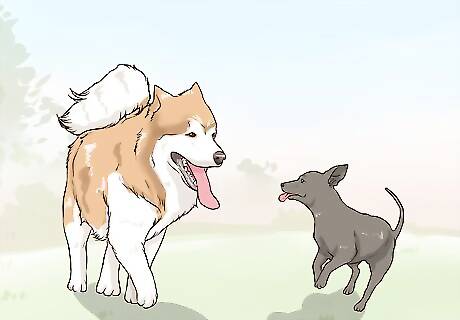
Socialize your dogs. You can help prevent aggressive behavior in your dogs by making sure they are adequately socialized. Dogs are most easily socialized between 3 and 12 months. If your adult dog exhibits serious behavioral issues around other people or other dogs, consider seeking help from an animal behaviorist or veterinarian. You can socialize your dog by exposing it to a variety of experiences, including: Different kinds of people. Children. Other dogs (both large and small). Other animals (such as cats). Noises. Travel.
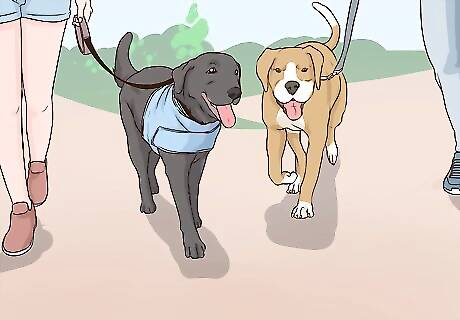
Work on dog-to-dog socialization. Although puppies may have fun wrestling with a group of other puppies, most adult dogs will find situations with large groups of dogs (such as a dog park) to be a bit stressful. You can work on each of your dog's dog-to-dog socialization, by doing it gradually, and with just one dog at a time. Invite a friend to bring their easy-going dog on a walk with you and one of your dogs. Allow a polite distance between the dogs. If both dogs are calm, allow them to sniff one another. If both dogs seem relaxed and their tails are wagging, allow them to play together off their leashes. Repeat this process until your dog feels more comfortable around other dogs.
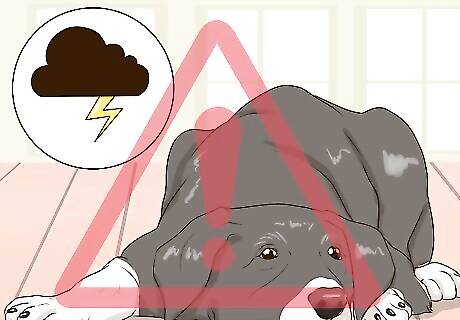
Watch out for signs of stress. Dogfights are usually the result of stress. Dogs can be very sensitive to their environments, and can become quite stressed—and thereby aggressive—over seemingly simple things. If you are aware of your dogs’ stressors, you can better prevent a fight. Some common stress factors can include: Bad weather (especially thunder). Food or a treat present. People arguing or being emotional. Changes to their routine. Not getting enough exercise. Loud noises (such as fireworks).
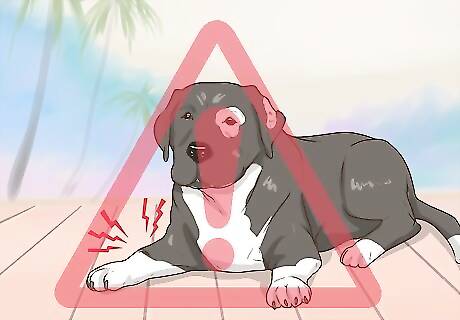
Recognize specific triggers. In addition to stress factors, each dog may have specific triggers that can cause undue aggression. Triggers can make your dog uncomfortable and/or defensive, but knowing what they are can help you prevent fights. Pay attention to the way your dog behaves under different circumstances. Some triggers can include: Injury or pain – If a dog is in pain, it may feel threatened by another dog. Protection – If your dog thinks you are in danger, it may act out to protect you. Unclear hierarchy – If one dog refuses to defer to another, they may fight to determine their places.
Recognizing When to Intervene
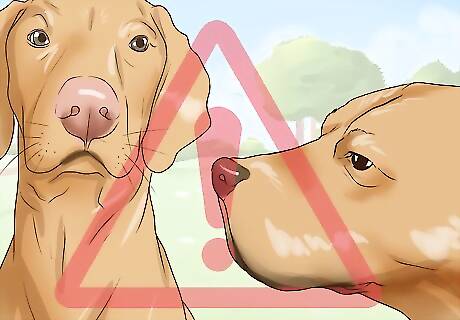
Watch the eyes. If one of your dogs is uncomfortable, it will stare intensely at the other dog. The other dog may either return the stare, or lose interest. If both dogs are locked in an intense stare, be aware that tensions may be rising. To prevent a fight, you may want to separate the dogs.
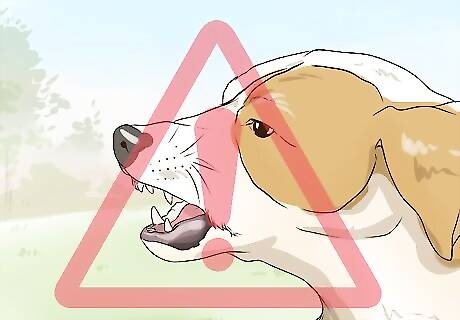
Recognize the dogs’ posture and body language. Certain dog movements--such as pulling their lips back, holding their head high or low, or baring their teeth—are meant to communicate a warning. If your dogs are acting this way towards one another, it may be best to separate them.
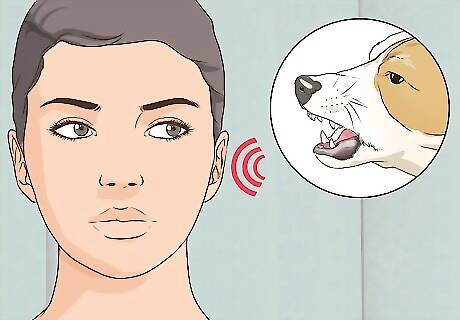
Listen to the growls. If your dogs are making low, rumbly growls at one another, this can also indicate a warning. However, growls can sometimes be misleading. Look for the dogs’ body language and other behaviors whenever you notice a growl. If it seems like they might be posturing to fight, it is best to separate them. All dog growls will sound a little different. It is important to listen to your dog and get a sense of the way it vocalizes.
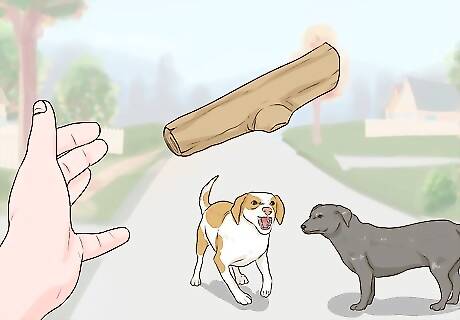
Break up a fight, when necessary. If your dogs do manage to get into a physical brawl, you may need to intervene to prevent injury. Try some methods that can be done from a distance, in order to best prevent yourself from getting hurt. Some strategies include: Make a loud noise. Spray them with water. Use a barrier to split them up (such as a piece of wood). Throw a blanket over them.
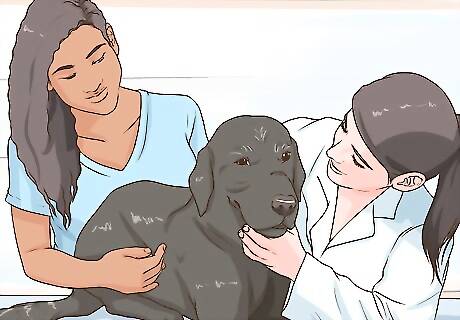
Deal with the aftermath of a fight. After a fight has been broken up, it is a good idea to keep the dogs separated for up to 48 hours. In this time, you'll need to tend any wounds and provide comfort to each dog. You'll also want to be careful about how you reintroduce them. Tend wounds - Check both dogs for wounds. Any puncture can become infected, so clean any injuries and/or take dogs to the vet. Provide comfort - Give plenty of affection and attention to each dog. They are likely to be shaky and nervous for a couple of days. Reintroduce them - After a waiting period, ask to friend to help you reintroduce the dogs. Meet at a neutral space and allow the dogs to sniff each other while they are leashed. If there are no signs of aggression, the dogs have probably moved on. If they continue to be aggressive, keep them separated for a while and try again.
Consult with an experienced animal behaviorist or trainer. Mild aggression between dogs can usually be handled at home. However, aggression can quickly become dangerous and even deadly. If your dogs cannot seem to get along, do not hesitate to call a professional.














Comments
0 comment